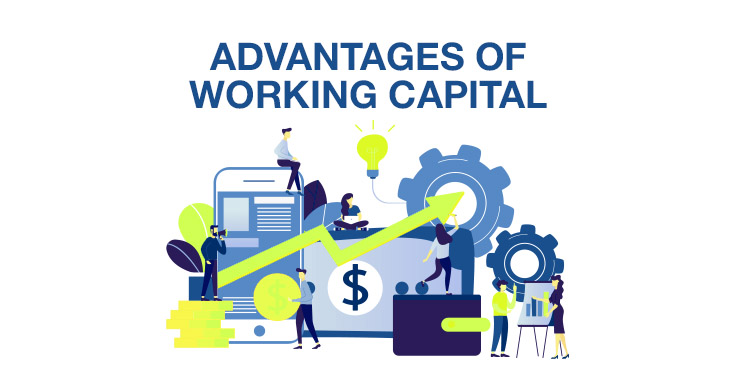SME’s in India
The Ministry of Micro, Small & Medium Enterprises considers the MSME sector to have excellent growth potential and a vital role in India’s economic development, in this SME Finance playes an important part.
A small and medium-sized enterprise (SME) is just as capable of generating revenues, assets, and employment opportunities for its owners or employees as a large corporation but on a smaller scale. SMEs are defined differently in every country, and each has its own rules about what constitutes an SME. As part of the ranking process, certain criteria must be met for example, companies with less than 500 employees or revenue below 10m USD per year may use different classification standards.
However, overall size is generally considered the best indicator to assess which sector a company belongs. The financing of small and medium-sized enterprises is a vital market function. It is a way capital can be provided, acquired, or cost for different types of companies made available on the market. The growing number of Small and Medium Enterprises (SMEs) in India reflects a highly valued demographic dividend. As defined by Section 7 of the Micro, Small and Medium Enterprises Development Act, 2006.
Classification Of MSMEs In India:
| Type of enterprise | Investment | Turnover |
|---|---|---|
| Micro | Rs 1 crore | Rs 5 crore |
| Small | Rs 10 crore | Rs 50 crore |
| Medium | Rs 50 crore | Rs 250 crore |
They are, therefore, so important to the economy that they make up significant components of all four major sectors manufacturing and service industries as well as secondary and tertiary occupations.
These points can be further expanded upon as follows:
These criteria make it difficult for small and medium enterprises (SMEs) to access credit from banks, especially in the early years.
Owing to their flexibility, SMEs can take many forms. There are varieties such as proprietorships, corporations, cooperatives, and HUFs (Hindu Undivided Families). An essential element of these provisions in India is that enterprises are not classified as small or medium-sized based on factors like the number of employees or how much electricity they use.
The Present Scenario Of The SME Sector In India
India’s Small and Medium Enterprises contribute nearly half of India’s industrial output, 40% of the country’s exportand create one million jobs annually. In addition, these enterprises produce over 8,000 quality products that are exported to overseas markets. Small and Medium Enterprises (SMEs) have grown to over 48 million in recent years, with a 4.5% growth rate. But raising funds for these businesses can be difficult due to the limited resources available to small companies. As a result, the government continues to ignore the importance of this sector in boosting GDP, though it provides an impetus for overall economic growth.
Despite stiff competition from the United States and China, India’s economy is expected to surpass those of Italy and Brazil within 15 years and be more prominent than Russia’s by 2050. The SME sector is essential to achieving greater export figures in India. Out of total exports from the country (43%), 43% come from small and medium-sized businesses, more than eight times that contributed by large companies.
Importance Of SMEs In India
Some authors have argued that SMEs play an essential role in a nation’s economic development due to their flexibility in the face of economic uncertainty and technological change.
- Producing goods and services in a way that employs more people than larger enterprises, thus creating additional jobs and helping to spread income more evenly.
- SMEs create more opportunities for employment and business in an agricultural economy than any other enterprise by providing a range of simple to complex services.
- Support entrepreneurship: Small and medium-sized enterprises (SMEs) contribute to entrepreneurial development.
- SMEs can leverage the strengths of large and small enterprises to create a productive capacity that contributes to strong economic systems.
Why SMEs Often Complain About Finances
Small and medium-sized enterprises often complain that the lack of financing prevents them from capturing lucrative investment opportunities and growing. In addition, starting a small business that is successful from the outset is extremely difficult, no matter how good an entrepreneur’s idea or product may be. Small and medium-sized enterprises (SMEs) struggle to get banks’ finances because these companies are just starting. As a result, an insufficient supply of credit is available for SMEs in India.
Small businesses have trouble obtaining financing, especially if they only need a small amount of money.
Investors are limited in their available funds. As a result, they tend to spend most of what they have and pay taxes before investing any more money.
Second, the limited funds available to investors can result in a competitive market. In addition, governments and large companies obtain many allocated funds from banks and other sources (such as grants) that are then used for projects or purchased machinery. This leaves less money for small businesses seeking start-up capital (or any other purpose).
Thirdly, smaller firms suffer because they are perceived to be riskier and less predictable than larger enterprises, making them unattractive investment targets. The following reasons can contribute to this:
- Investors do not always receive the returns they expect from investing in small and medium-sized enterprises.
- Large corporations often fail to internalize and take responsibility for the external consequences of their actions seriously. Additionally, large corporations are so influential in our culture that it is unlikely they will be held accountable by the media or other watchdog organizations.
- In such a business, the owner has to accept full responsibility for their decisions.
- Collateral for a loan can be almost any valuable asset, but small businesses rarely have such assets.
The Government of INDIA And RBI’s initiative to Eradicate Challenges Of SME Finance: TreDS
The Reserve Bank of India (RBI) has mandated all banks to provide a single platform for trade financing for Micro, Small, and Medium Enterprises (MSMEs). The mandate came into effect from 1st April 2018, and the TReDS came into existence.
This mandate aims to help MSMEs gain access to credit from banks quickly. It also aims to reduce non-performing assets (NPAs) in bank books by providing timely payment solutions to MSMEs.
It has been observed that many MSMEs are unable to get loans from banks because they do not have enough collateral or credit history. Therefore, they often resort to informal sources such as moneylenders who charge high-interest rates. However, providing a centralized platform for trade financing through TReDS will make it easier for SMEs and MSMEs to get finance from banks without any collateral or credit history.
The Game Changer Of SME Finance Situation In India: Trade Receivables Discounting System (TReDS)
Trade Receivables Discounting System (TReDS) is a game changer for India’s small and medium enterprises (SMEs). It has the potential to make a significant impact on the SME finance situation in India.
Trade receivables discounting is a financial service that allows businesses to sell their receivables at a discounted price to third-party investors. In other words, it’s an alternative to debt financing. It will enable businesses to get funding without taking on debt or selling equity.
In India, TReDS was launched by M1xchange in April 2018 as part of the Digital India initiative. The goal is to provide small and medium-sized businesses with access to easy credit at lower rates than they can get from banks or other lenders.
TReDS is an institutional mechanism to facilitate the discounting of invoices for MSMEs from corporate buyers through multiple financiers. Invoice discounting on TReDS involves three participants MSME Supplier, Corporate Buyer, and Financier. The invoice is uploaded by either buyer or supplier depending on the discounting method and is approved by the other party. Once the invoice is approved, the financiers on the platform start to bid on the invoice. The supplier accepts the bid, and the discounted amount is credited to its account in 24 hours.
Why SMEs In India Are Going for TReDS:
- It provides easy access to working capital for SMEs, enabling them to meet their business requirements effectively.
- It reduces the cost of funds for the borrower while providing better credit management and increasing the efficiency of lending processes.
- TReDS helps improve cash flow management and enables timely payments to suppliers and employees, leading to increased productivity, growth, and profitability of the company.
- Also, It encourages good governance practices by making it mandatory for companies to maintain proper records of transactions with their customers and suppliers; this ensures that they are always compliant with regulatory requirements.
Why Digital SME Finance by Trade Receivables Discounting System (TReDS) Is Better Than Business Loans
Digital SME Finance On TReDS
- Collateral-free finance
- Quick processing (Usually in a couple of days)
- Availed of short-term financial aid
- Digital process
- Hassle-free documentation process
- Simple eligibility criteria
- No impact on the business balance sheet
Business Loan
- Collateral required
- Long processing period
- Availed of long-term financial assistance
- Generally, not a digital process
- Lengthy documentation process
- Stringent eligibility requirements
- Impacts the business balance sheet and is considered as a debt
How MSMEs Can Leverage Digital SME Finance And Improve The Working Capital Flow
Digital SME Finance through digital TReDS platforms has the potential to emerge as the most successful funding mechanism for business. The process is quick, transparent, and straightforward. This weeds out any corrupt practices associated with Invoice discounting, which were non-regulated and non-transparent.
Any economy thrives on smooth, rule-bound, and fast adoption of the fund exchange model. Invoice discounting through TReDS, as observed from the four years of the Indian experience, serves the needs. Hence, there are regulatory efforts to expand the system by India, which is targeting to emerge among the top three economies in the world.
The Process Of SME Finance On TReDS:
On M1xchange, the supplier uploads an invoice of receivables after delivering its goods/services. Once the respective buyer approves the invoice, the financiers bid against the invoice, and the supplier has the freedom to choose the best bid and receive the payment in his account in 24 hours.
MSME suppliers enjoy a host of benefits with the implementation of TReDS. The most notable use is easy and quick invoices discounting / bill discounting at competitive rates. In addition, the financing is ‘without recourse to the MSME suppliers. This electronic account payment system eliminates cash application, discrepancy resolution, and collection costs.
Following are the salient features of digital SME finance on TReDS:
- Easy access to funds
- No paperwork
- Single platform for sellers, buyers and financers
- Transact online
- Competitive discount rates
- Seamless data flow
- Standardized practices
To start leveraging the power of Digital SME Finance through M1xchange TReDS Click Here
Last modified: August 29, 2023















